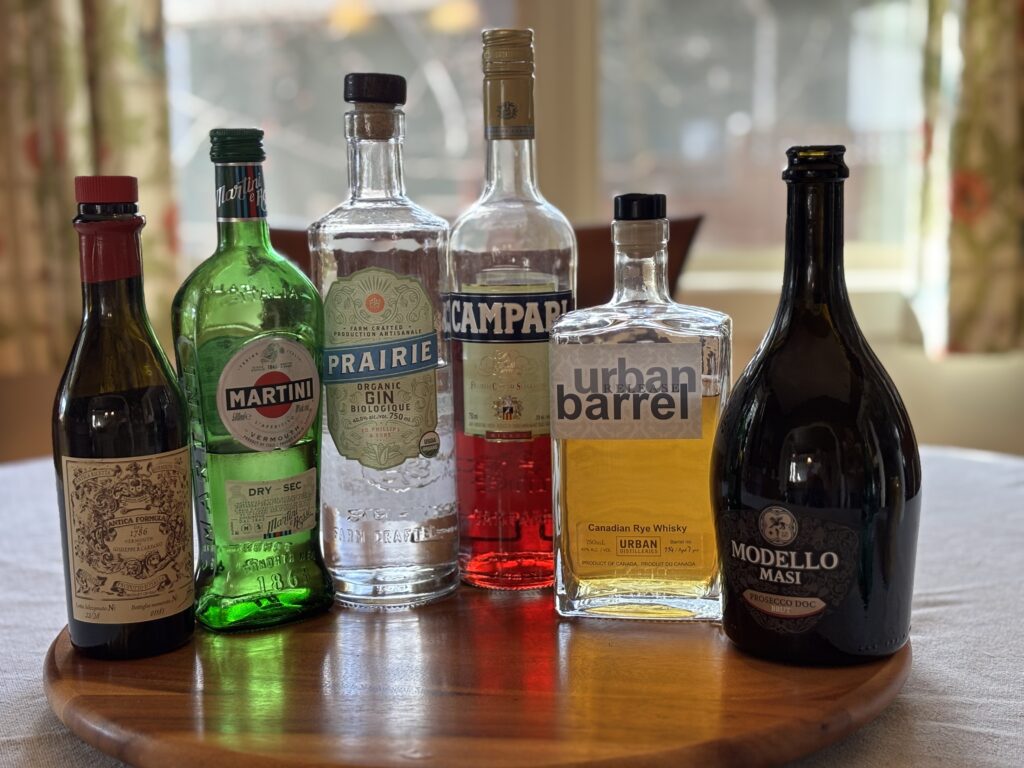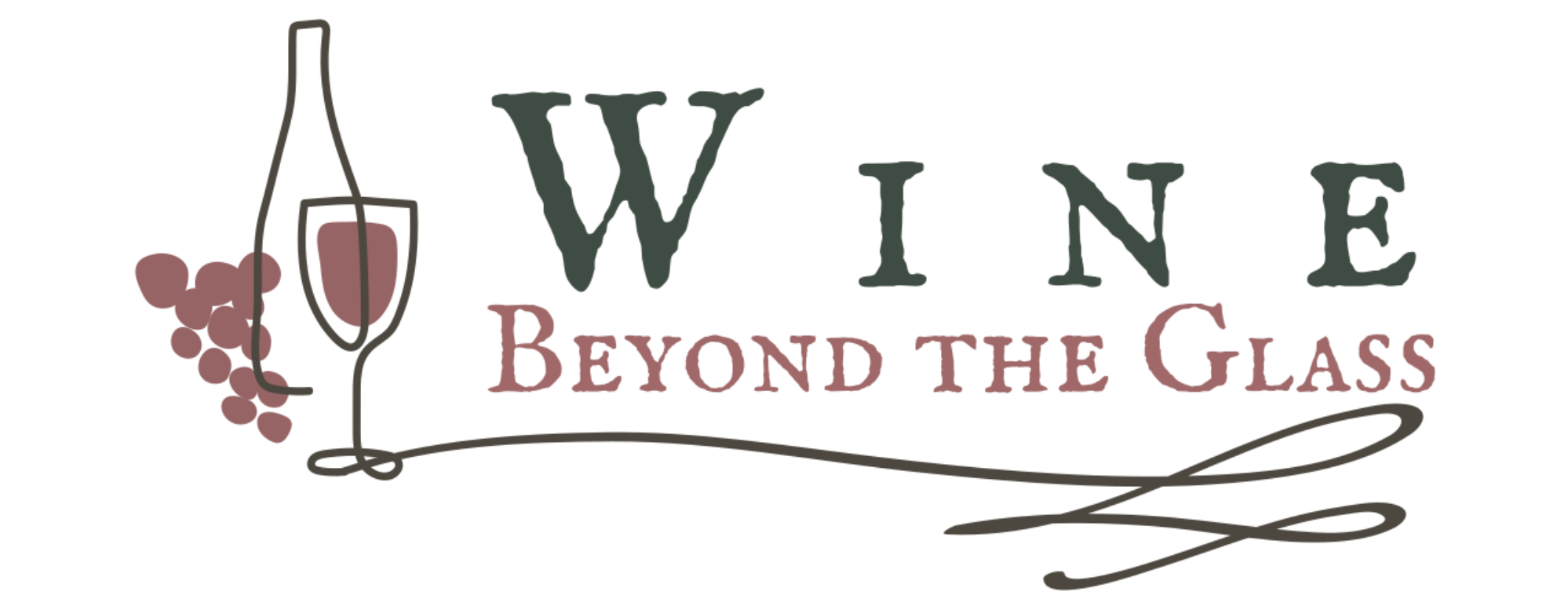My first experience with Vermouth
For the last 20 years or so I have used Vermouth every time that I make a risotto, because that’s what Jamie Oliver suggested for deglazing the pan and adding flavour. I may possibly have had Vermouth in a cocktail at some point? So when I saw that today was World Vermouth Day, I decided that I had to learn more about this beverage and taste it mindfully in its different formats. I called my trusted wine tasting friends, who are always happy to experiment with me, to action and we tasted and experimented with Vermouth.

What did we need for the tasting?
- I bought Martini Bianco and Giuseppe Carpano Antica Formula Vermouth.
- We had sparkling water, tonic water, Prosecco, Urban Distilleries Canadian rye whiskey, Prairie Gin and Campari ready to mix, as well as Angostura and Orange Bitters.
- We were a bit short on garnishes, but we opened a bottle of home-made Maraschino cherries and had a lemon on hand.
- We also needed an array of glasses. These included a tulip-shaped wine glass, a martini glass (this had to double as a coupe glass) and a brandy balloon glass (this replaced the called-for balloon glass).
- Finally we had a cocktail shake, ice and some swizzle sticks available.
What did we taste?
I searched online and found 4 cocktail recipes using either a dry or sweet Vermouth (more on this distinction later) that appealed to me. We shared portions so as not to overdo our alcohol consumption.
- Martini Bianco & Tonic: A ratio of 50/50 Martini Bianco and tonic served in a balloon glass packed with ice. (I should have used a lime wheel)
- Gin Martini Cocktail: We used o.75 oz of Martini Bianco, 2.5 oz of Prairie Gin, and 1 dash of orange bitters. We stirred these in the cocktail shaker (sorry James Bond!), and then strained into martini glasses and garnished with a lemon twist.
- Sweet Vermouth Spritz: We poured 2 oz of Guiseppe Carpano Antica Formula Vermouth into a wine glass filled with ice. We then added 3 oz Brut Prosecco, 1 oz soda water and lemon twist as a garnish.
- Manhattan: We stirred 2 oz of the Urban Distilleries Canadian rye whiskey, 1 oz Giuseppe Carpano Antica Formula Vermouth and 2 dashes of Angostura bitters in the cocktail shaker with ice and then strained it into the Martini glass and garnished with a maraschino cherry.
What did I learn?
What is Vermouth?
Vermouth is a aromatized, fortified wine. The base wine is usually white and a wide array of herbs and other ingredients and infusion or extraction processes are used. Some examples of the aromatic components are wormwood (artemisia absinthum) chamomile, coriander seeds, quinine, juniper, gentian, saffron, rhubarb, iris roots and vanilla. It is fortified with neutral grape spirits to between 15% and 18% abv.
Because Vermouth is flavoured with local botanicals and made for local tastes, it can provide a window into the terroir of a particular area.
The History of Vermouth
Vermouth has an ancient history dating back to ancient Rome and/or Greece or possibly even earlier depending on the source. The herbs were added to wine as health tinctures for various ailments.
The story goes that vermouth as we know it was started in a wine shop Turin in 1786 by Antonio Carpano, a herbalist by training. Herbalist created aromatised wines as medicines and wormwood was thought to have curative properties for gastric ailments. This aromatised wine was based on quality muscatel wines, a variety of herbs and spices and fortification. He called it “Wermut”, the German word for wormwood, a central ingredient. In 1813 Joseph Noilly created the first dry Vermouth. As with all products, Vermouth has had its highs and lows depending on political stability, availability of ingredients and vagaries of consumer choice, but became popular once more in the 1990s. In 2017, Vermouth di Torino became a protected geographical area with strict rules. The Piedmont provides the majority of the alpine herbs, including wormwood, that are necessary for the production of Vermouth.
As per Italian law, at least 75% of the vermouth must be wine, with overall ABV not exceeding 22%. Among the numerous plants, herbs and spices that can be used, Artemisia absinthium is mandatory.
CMB Spirits selection
Different types of Vermouth
There is a good explanation at Liquor.com, but here is my summary of the salient details. The main distinction between Vermouths is their sweetness level. This ranges from extra-dry (<30g/L sugar content) or dry (<50g/L) to sweet (>130g/L sugar content). In contrast to wine, “red” vermouth does not mean that it is made from red grapes. Most vermouth is made from a white wine base so as to prevent tannins from interfering with the fragrances. The red or amber colour comes from the addition of caramelized sugar or caramel colouring and is thus mostly equated with sweet, while white vermouths are expected to be dry.
Which was my favourite?
- On the rocks: I loved the complex flavour of the Giuseppe Carpano Antica Formula.
- Refreshing cocktail: I preferred the Martini Bianco & Tonic. I can see this replacing a pre-dinner G&T on some occasions.
- Stronger cocktail: The dry martini was a revelation for me! Why have I never tried it before?
Drop me some comments below on your favourite Vermouths and Vermouth-based cocktails. And if you are like me and have never tried Vermouth before, please do yourself a favour and savour some sips today on World Vermouth Day.

